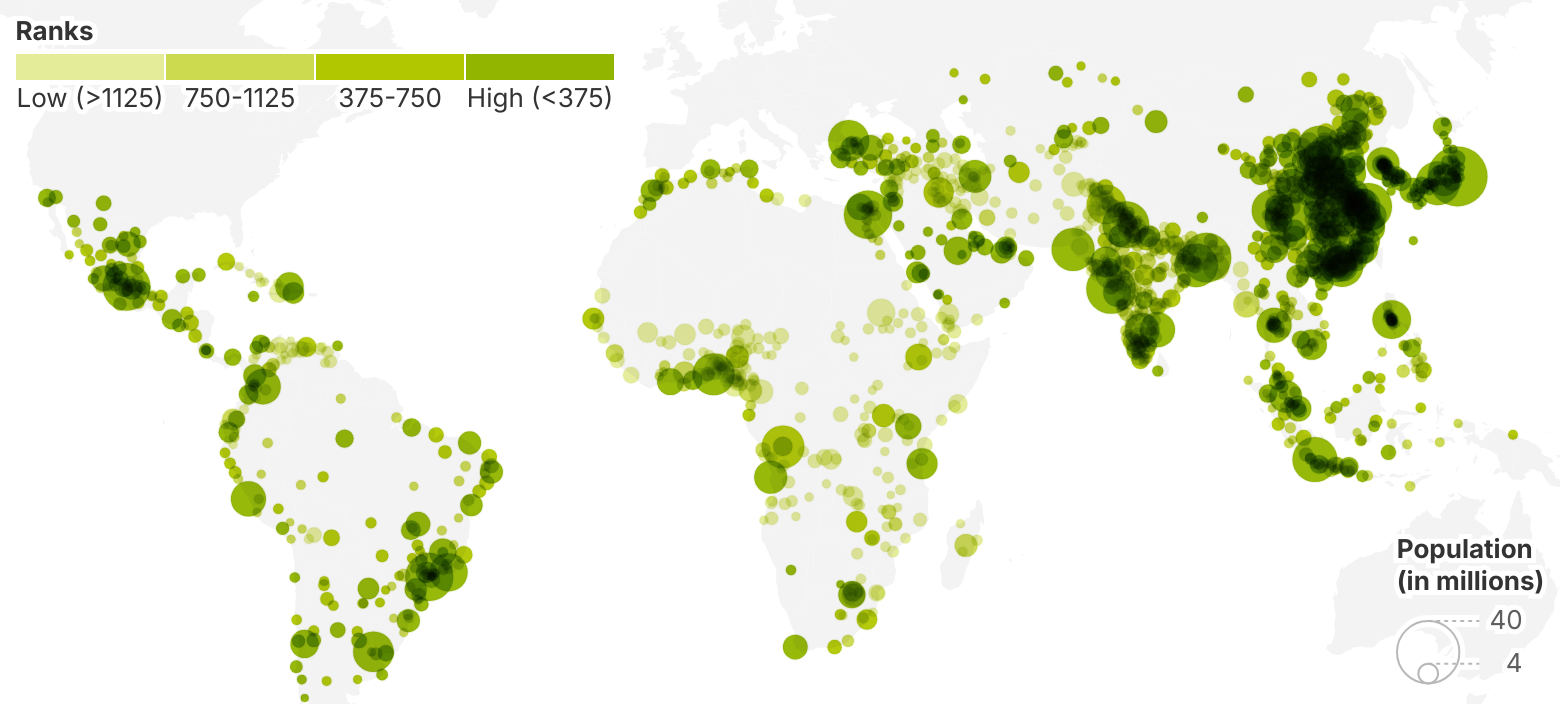This sub-index assesses the density of corporate headquarters, multinational presence, global brand outlets, hotels, and factories. It captures both the city’s relative population scale, its economic scale, and its per capita wealth. It also explores the vibrancy of a city’s startup community. And, finally, it looks at the city’s transport linkages to domestic and international peers.
How they link to megatrends
The more established hubs, such as Shenzhen or Mexico City, emerged during the
2000s and early 2010s, riding a wave of globalization. These cities attract foreign investment from
around the world, nurture local industries that give rise to emerging global champions, and upgrade
their retail sectors in line with the city’s growing wealth.
The newer hubs are benefiting
from a rebalancing in growth. Some, such as Riyadh, have introduced ambitious policies to develop
entirely new industries. Others, such as Mumbai, are beneficiaries of geopolitics and supply chain
shifts, as multinationals rebalance their investments toward new high growth markets.
Unique features of commercial hubs
These cities have developed a broad range of manufacturing and service
industries, rather than depending on any single activity. They are the headquarters for many local
firms that have gone national, and often global, in their reach. Transport connectivity is also
strong, with most of this class having large airports and ports.
Global brands have opened
new outlets to tap into these cities’ growing affluence. These hubs also are destinations for
tourists and offer a range of hotel options, including all the 5-star global names.
In selecting nine Commercial Hubs to profile, we chose more than one high-performing city from each region to illustrate the nuances of such vast geographies and the fact that there’s no single formula for success. Johannesburg ranks more than 100 places below Cairo, for instance, but it shows what’s needed to be a vibrant commercial hub in southern Africa.
What might the future look like?
The number of commercial hubs will continue to grow. The world’s rapidly developing regions are no different than North America, Europe, Japan, and more recently China. Globalization might have slowed but economic growth has not, and governments are doubling down on new growth strategies that will drive the expansion of regional or midsized hubs.
Why does it matter for business?
It’s no longer enough for a global firm to open only one outlet or branch in a country’s capital. The choices are growing and that means they need to expand networks or prioritize bets to capture opportunities. The competition between cities will grow fiercer, and local governments will need to plan carefully to ensure their city is a magnet for domestic and foreign investors. The commercial hubs also are consumption destinations, which is the largest driver of growth in most countries.
1,500 Commercial Hubs By Region
Population
<500k
500k-1 million
1-5 million
>5 million
1500 (Low Ranks)
>
(Top Ranks) 1
Asia
Middle East
Latin America
Africa
Country
Rank#
Population
1,500 Commercial Hubs By Region
Population
<500k
500k-1 million
1-5 million
>5 million
1500 (Low Ranks)
>
(Top Ranks) 1
Asia
Middle East
Latin America
Africa
Country
Rank#
Population









